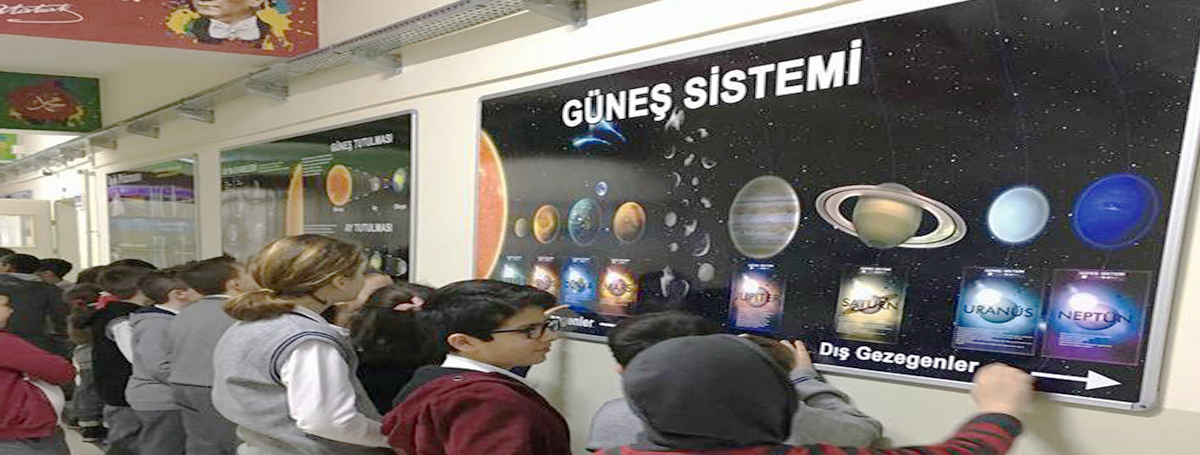
Throughout the Ottoman Empire, a crucial objective of education was to raise 'excellent Muslims'. Thus there was a need for Islamic scholars, which was sustained through Islamic Faith Schools, called Madrasa.In 1913, the Medresetü-l Eimmeti vel Hutaba (School of ministers and preachers Medresetü-l Vaazin were integrated to form the tangible origins of today's Imam Hatip high schools
In 1924, the Tevhid-i Tedrisat (Law of Unification of Educational Instruction was passed, replacing the existing, mainly sectarian academic system with a nonreligious, centralist and nationalist education one. The brand-new law brought all instructional institutions under the control of the Ministry of National Education. A Faculty of Faith at the Darülfünun (Istanbul University), special schools for training imams and hatips (ministers and preachers) were opened by the new Ministry of National Education. However, in 1930 İmam Hatip schools were closed and 1933 the Professors of Divinity was abolished.
In contrast to the solely secularist nature of the education policy of the Republican politician Individuals's Party (CHP) spiritual education was renewed in 1948. This included the establishment of a Faculty of Theology at the University of Ankara in 1949. Very first steps for the establishment of Imam Hatip schools started in 1951 under the Democrat Celebration federal government, which set up seven unique secondary schools (Imam Hatip Okulları). In addition, in 1959 Islamic Institutes were opened for graduates of Imam Hatip schools.
Following the coup d'etat in 1960, Imam Hatip schools experienced the threat of closure. Following the go back to civilian politics and the introduction of the brand-new constitution in 1961, graduates of Imam Hatip schools could only enrol in university programmes if they had passed courses provided at nonreligious schools. During the premiership of Süleyman Demirel however, graduates of Imam Hatip schools were admitted to university without such requirements. The 1971 Turkish coup d'état introduced two key reforms: first of all junior high Imam Hatip schools were eliminated, and in 1973 Imam Hatip schools were renamed as Imam Hatip high schools. Under the subsequent National Education Basic Law, Imam Hatip schools were defined as trade schools, where trainees were to be trained as preachers and ministers or prepared for greater education.
Imam Hatip schools grew gradually at initially, however their numbers broadened quickly to 334 during the 1970s. The coalition government of 1974, established by the CHP and the MSP (National Salvation Party), devoted to reopen junior highs and giving the right of entry to university through assessment. 230 brand-new Imam Hatip high schools were opened in a duration of almost 4 years. During the 1974-75 academic year the variety of students addressing the Imam Hatip high schools grew to 48,895. This number consequently grew to 200,300 by 1980-81. In addition, women got the right of entry to Imam Hatip high schools in 1976. The expansion of Imam Hatip high schools is frequently mentioned as the impact of the National Redemption Celebration's membership of a variety of coalitions with Nationalist Front federal governments.
Scenario because 1980
The coup d'etat of September 12, 1980 is an important turning point in the history of Turkey and likewise for the history of Ä°mam-Hatip high schools. Under military governance, graduates of Imam Hatip high schools got the right of entry to all university departments. In 1985, two new Imam Hatip high schools opened, one in Tunceli, despite of the so-called ethnic structure of the region, and the other in Beykoz as an Anatolian Imam Hatip High School, with the objective of contributing to the education of kids of households who work abroad. Although the variety of Imam Hatip high schools had actually not increased given that, the variety of trainees going to Imam Hatip high schools has read more increased by 45%. This is partly due to the improvement in the quality of Imam Hatip high schools and the education used at such schools.
Throughout the education year of 1973-74, the overall number of Imam Hatip trainees was 34,570; in 1997 this number had actually dramatically increased to reach 511,502. Alongside this massive boost in appeal, the number of schools also increased. The variety of Imam Hatip junior high reached 601 and secondary schools 402. The increase in both trainee and school numbers can be credited to elements consisting of the dedication of people to faith, dorm centers, scholarships, the admittance of females and a boost in demand for religious education.
Research recommends that in between the years of 1993 and 2000, prospective students signed up at Imam Hatip high schools mainly to get spiritual tutoring together with a more general education.In addition, research study shows enrolment at Imam Hatip high schools was based exclusively on the student's choice. The 3rd proposed consider the rise in popularity of Imam Hatip schools is the admission of female trainees in 1976. By 1998, nearly 100,000 females went to Imam Hatip high schools, comprising nearly half of all students. This fact is especially exposing because females are not qualified to become either priests or ministers.
Nevertheless, the introduction of 8 years of mandatory education in 1997 has actually seen an unexpected decrease in the popularity of Imam Hatip schools. In 1999, the reclassification of Imam Hatip schools as "professional schools" meant that, although more options had been made offered to graduates, obtaining locations at prominent university courses ended up being more difficult.By needing that all eight obligatory years of education be invested under the exact same primary-school roofing system, middle schools were abolished. Children might not enter professional schools (among them the Imam Hatip school) up until the ninth grade (rather than the 6th, as prior to).